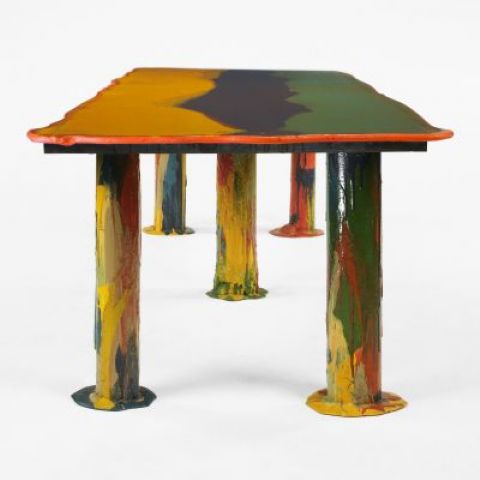I have been reading on the old Chiat Day offices, excerpts are from Wired:Â Â
“You will have private space,” declared Chiat, “it just won’t be personal space.
What Chiat did was set up, in effect, a college campus. “That was my model,” he says. “The idea is, you go to lectures, gather information, but you do your work wherever you like.” To encourage this free-flow, Chiat replaced private offices and cubicles with little clusters of couches and tabletops grouped into common areas, along with a Student Union-like central gathering place and several large conference rooms. He even installed little “Tilt-A-Whirl” domed cars, taken from old amusement park rides, where two people could sit down together and brainstorm – assuming they didn’t mind looking ridiculous as they did it.
He also did a test run. One of the first guinea pigs was Monika Miller, an associate media director. One day, Miller’s desk was taken away from her. To cope, she brought in a little red wagon, a classic Radio Flyer model. Each day, Miller would pile all of her documents, files, and possessions into her wagon, and begin to drag it up and down the halls, looking for the empty desk of someone out sick for the day. “Everyone thought it was so cute,” recalls Miller. “I’d be trudging down the hall, and they’d laugh and say, ‘Oh look, here she comes with that little red wagon.’ It was like a bad dream.”
Before long, there was a beeline for the only vestiges of a conventional workplace – the enclosed “project rooms.” In LA and, later, in the New York virtual office, these rooms had been designated for clients, or agency groups working for a particular client. But in the frantic attempts to escape from open space, nobody much cared who they were designated for. “The rooms would quickly fill up with people,” says freelance copywriter Paul Spencer, “and then they’d say to everyone else, ‘Get out – this is mine!'”
Chiat had anticipated this pathetic human reaction, and was ready. He declared that “nesting” – parking in any one place for more than a day – was strictly forbidden. In the “Chiat High” he’d created, he acted as both principal and hall monitor. Says Rabosky: “Jay would walk around, and he’d give you this look and say, ‘Did you sit here yesterday?’ And he’d make you get up and move.”Â
Jay Chiat left the scene of the chaos and turned his attention to New York. Here, he would unveil his virtual experiment’s real showpiece. Designed by the Italian architect Gaetano Pesce …”A surgeon who comes with a red shirt and green shoes is not necessarily a clown,” he explains.
Pesce had also designed “playful” chairs with springs at the feet; they wobbled, and sank too low, making the traffic girls’ miniskirts ride up. The conference room table was coated in a soft silicone resin that had a magnetic effect on paper. “It was hilarious to watch someone in the middle of an important presentation desperately trying to pick up a piece of paper off that desk,” recalls one sadistic staffer.
The media kept gushing about Chiat’s virtual adventure, but by the end of year one, the whole “grand experiment” was already wobblier than a Gaetano Pesce chair.
